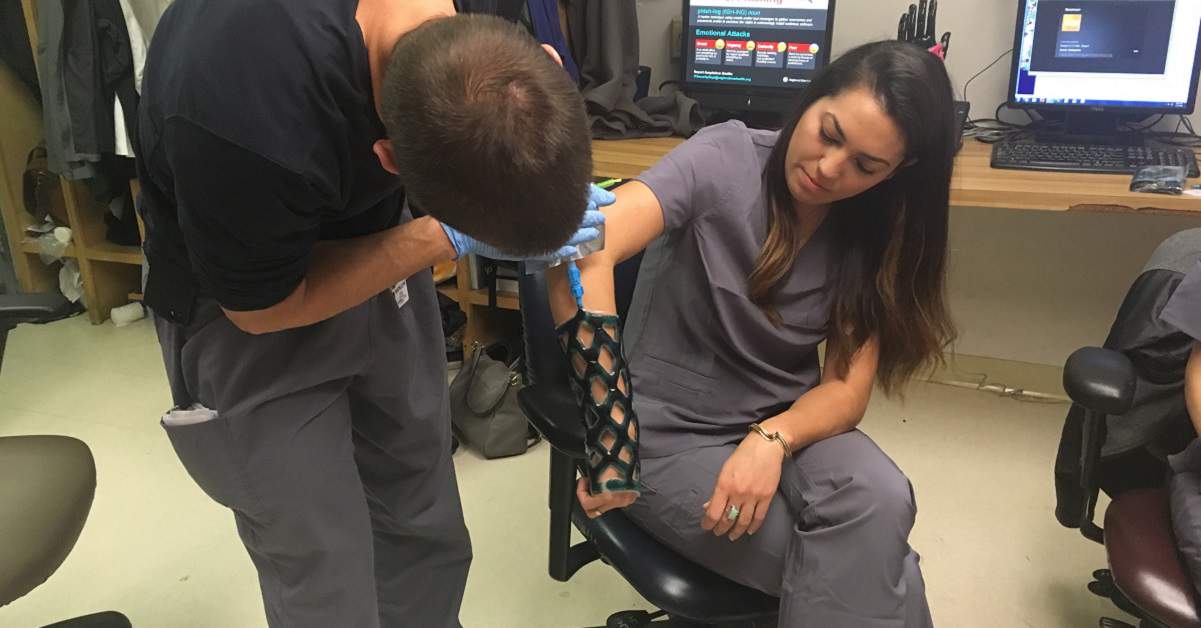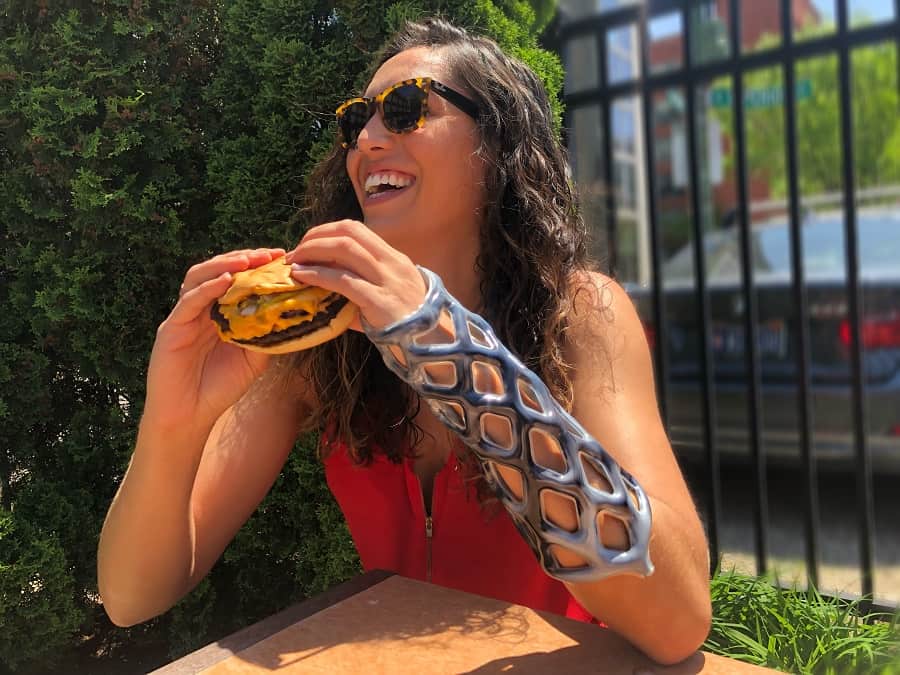Regional One Health took a bold step when it opened the Center for Innovation in 2016 – but the initiative is thriving as it finds new ways to improve health care and its delivery.
Already, the Center for Innovation team is working with a company that developed a more convenient device for healing fractures as well as entrepreneurs who created a wound care product using Manuka honey.
With continued support from the Regional One Health Foundation, the center continues to embrace innovators and give them opportunities to test and improve their products.
Regional One Health’s Center for Innovation opened in 2016 based on the idea that thinking outside the box is uniquely important in health care, where finding a better way can improve how doctors care for their patients and reveal new ways to provide hope and healing.

Alejandra Alvarez is the director of the Center for Innovation. With support from the Regional One Health Foundation, her team is working with innovators to help improve the future of health care for all of us.
It was a bold move for a health care system to make, but it is thriving thanks to support from senior leadership and the Regional One Health Foundation.
“It’s outside the norms to give access to innovators,” said Alejandra Alvarez, Center for Innovation Director. “Health care is typically a closed environment. But we believe care is not just about what’s good for Regional One Health, it’s about what’s good for the industry.”
It’s a philosophy that is proving attractive to entrepreneurs.
The center’s spirit of discovery first caught the attention of Cast21, a company that had created a new orthotic to heal bone fractures without the inconvenience of a traditional cast.
Their sleek webbed sleeve — which is breathable, waterproof and lightweight — had earned certification as an FDA Class I medical device. The time had come to test and refine it.
Cast21 CEO Ashley Moy said the Center for Innovation stepped up to the plate.
Over the past year, Regional One Health has given her company a chance to not only see real doctors and patients use the orthotic but to also learn about everything from how hospitals vet and purchase products to how they train their staff to use them.

For the innovators at Cast21, who created a new device to heal fractures, the Center for Innovation offered a chance to test their product with real doctors and patients.
“Feedback is extremely valuable to us,” Moy explained. “We’ve already made changes in light of what they’ve said.”
Moy and VP of Engineering Veronica Hogg started by training surgeons to apply and remove the product, a simple process that takes only 10-15 minutes and leaves the patient with an effective — and cool-looking — protective device in a color of their choosing.
When the surgeons raised questions, such as how to apply the sleeve on a trauma patient who is lying flat rather than sitting, Moy and Hogg found answers. Soon enough, the device was ready to be used on patients, who were also encouraged to provide feedback.
Marijo Cox welcomed that opportunity after she broke her wrist in a car accident. Marijo was initially fitted with a splint from her fingers to over her elbow: “It was big and cumbersome,” she said, remembering how much she had been dreading being stuck in it for weeks.
Then she was offered the Cast21 device. “The doctor brought it in and told me it’s much more comfortable, it’s lighter, you can shower in it, and asked me if I’d be interested. I took one look at the big cast I was wearing and one look at the one in his hand and I said, ‘Yes, please!’”
Marijo said her experience was excellent, and the only problem was minor irritation around her fingers. Based on her feedback, the Cast21 team again jumped into action, making changes to enhance patient comfort. As they get closer to taking their product to market, Moy said they are in a better position thanks to the access they received at Regional One Health.

The Cast21 team says they’ve improved their product and go-to-market strategy thanks to the feedback they received from patients and doctors at Regional One Health.
As Cast21 moves forward, so too does the Center for Innovation.
Alvarez recently announced a partnership with SweetBio, which bioengineered a new material using Manuka honey and created a wound care device with the potential to combine the effectiveness of an advanced dressing with the convenience of a traditional dressing.
At Regional One Health, they’ll test the product on the management of wounds such as ulcers, surgical sites and more.
Kayla Rodriguez Graff, SweetBio cofounder and CEO, calls it the next phase of her company’s story — and one that wouldn’t happen without the Center for Innovation.
Alvarez is equally excited, noting it’s another step toward the center’s ultimate goal of creating an environment where Regional One Health takes the lead in turning Memphis into a hub for creating the health care of the future: “We want to build an ecosystem in Memphis that attracts innovators to improve health care and help the city grow. We’re successful if they’re successful.”

